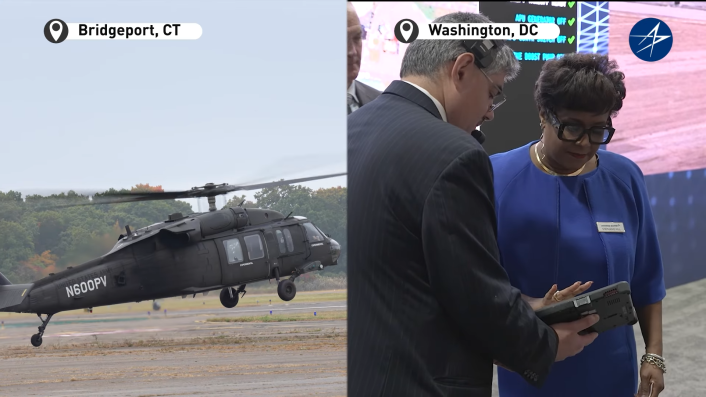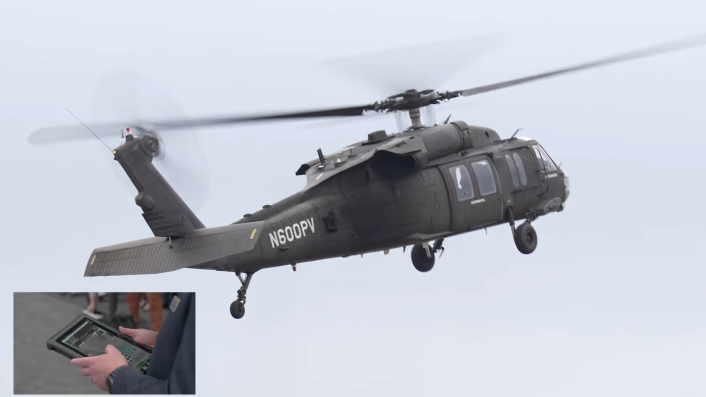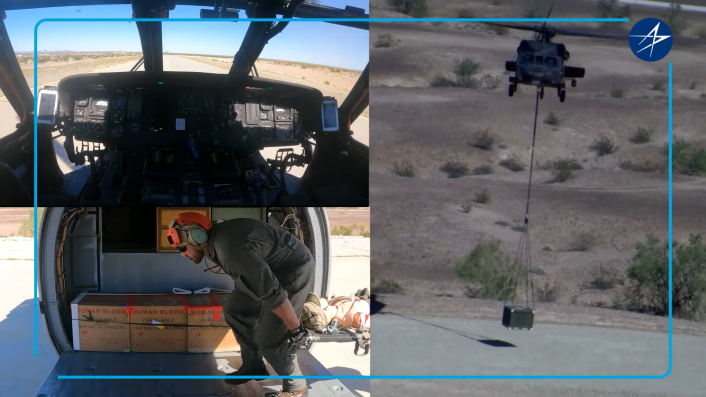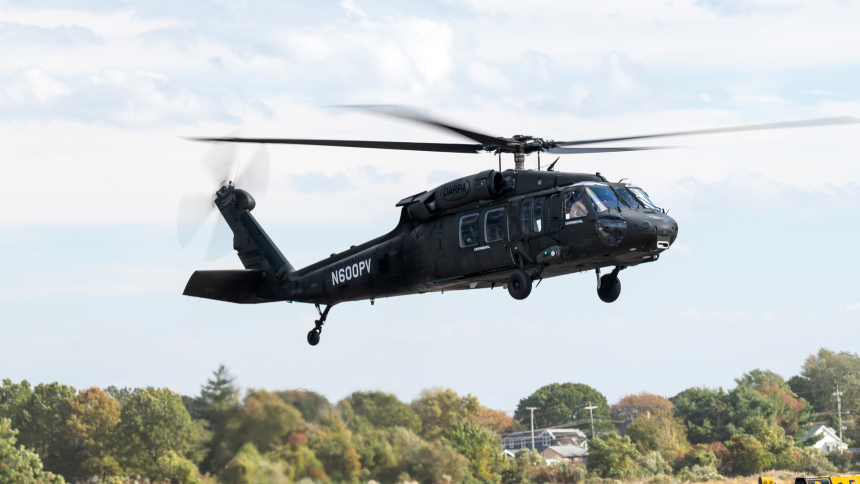The flight simulated ‘contested logistics operations’ where a ground crew hooked up a sling load to the helicopter remotely controlled through the MATRIX system. Tactical flights ferrying supplies from logistics nodes to landing zones in forward areas are routine operations which, if rendered autonomous, can significantly reduce man-hours and fatigue.
A week after DARPA (Defense Advanced Research Projects Agency) contracted Sikorsky to equip the U.S. Army’s experimental fly-by-wire UH-60 Black Hawk helicopter with its MATRIX autonomous flight system, the company demonstrated the technology at the AUSA (Association of the United States Army) symposium in Washington D.C. on Oct. 17, 2024.
Using a tablet connected via a data link to the helicopter 300 miles (483 km) away in Bridgeport, Connecticut, Lockheed Martin Rotary and Mission Systems President Stephanie Hill controlled the UH-60 (registration N600PV). While safety pilots were present inside the cockpit as per FAA (Federal Aviation Authority) regulations, the helicopter autonomously performed take off and hover, before flying a circuit and landing again without pilot input.
MATRIX is the technological foundation for DARPA’s ALIAS (Aircrew Labor In-cockpit Automation System) program that Sikorsky has developed since 2020. The system can receive remote mission commands in real-time without the need of assistance from a flight crew, as emphasized by the press release mentioning that Hill is not a pilot.
As The Aviationist reported, Feb. 5, 2022 saw a UH-60A Optionally Piloted Black Hawk performing the first-of-its-kind 30 minute fully autonomous flight without anyone onboard at Fort Campbell, Kentucky. This was followed by a second flight on Feb. 7. Previous tests in 2021 demonstrated complete supervised autonomy including autonomous take-off, landing and two simulated obstacle avoidance scenarios, all supervised using only a tablet.
That flight also saw the pilot switching to autonomous mode from two-pilot operations and leaving the aircraft. The helicopter autonomously completed a pre-flight checklist, started its engines, navigated at typical speed and altitude through a simulated cityscape, avoiding imagined buildings while performing route re-planning in real time as on-board sensor simulation provided real-time obstacle data.
The video of the MATRIX demo
In the demonstration’s video, Lockheed Martin said “visitors and U.S. Army senior leaders saw how a Black Hawk helicopter integrated with Sikorsky’s MATRIX autonomy system can receive remote mission commands in real-time. Then, carry out that mission on its own, using its onboard autonomous systems, without remote control or pilot inputs.”
The demo flight simulated “contested logistics operations” where a ground crew hooked up a sling load to the aircraft. One of the pilots could be heard saying in the video that the aircraft “is holding position,” confirming the indications on the tablet. Tactical flights ferrying supplies from logistics nodes to landing zones in forward areas are routine operations which, if rendered autonomous, can significantly reduce man-hours and fatigue.

Lockheed said that the MATRIX system goes beyond just “following a planned route.” The company specifies “the system acts fully independently, reacting to the dynamic combat environment to avoid threats, optimize routing, and execute emergency procedures if necessary.” This implies that the system would involve sensors like RWR (Radar Warning Receivers) and MAWS (Mission Approach Warning Systems) fused with the autonomous flight control system, with possibly the advanced algorithm taking alternative approaches and routes to the LZs (Landing Zones).
The video did begin with a collage of three footages, showing crews loading a stretcher with a mannequin in the UH-60’s cabin to simulate a MEDEVAC (Medical Evacuation) mission, an empty cockpit and the helicopter hovering several feet high with cargo slung on the cargo hook. This is presumably from an earlier test of the MATRIX system with the UH-60, not related to the latest demonstration.

Significance of the autonomous flight capability
Developed over ten years with DARPA, MATRIX will allow the U.S. Army’s DEVCOM (Combat Capabilities Development Command) to rigorously test and assess a variety of autonomous capabilities, ranging from single-pilot operations to fully autonomous, uninhabited flights.
The program is part of a larger effort to “modernize the Black Hawk, to incorporate new technology, new capabilities to create the Black Hawk of the future,” said Sikorsky’s vice-president Richard Benton. The company added that the technology can be fused with all aircraft, operators and any weather conditions. Sikorsky is also incorporating the technology into a Cessna 208 Caravan.

The program will also see the testing of other sensors for obstacle and terrain avoidance, freeing up the pilot/s from core flying duties for mission- and combat-critical tasks. The pilots are likely to be present for more complex missions in contested airspaces, where merely overseeing the system’s autonomous flying and threat avoidance would be relief enough when combat tasks are a priority.
Pilots can switch between autonomous and manned modes at any time during the mission, according to the company. Fully unmanned flights would be expected in situations with no adversary threat, far in the rear or even HADR (Humanitarian Assistance Disaster Relief) missions.









